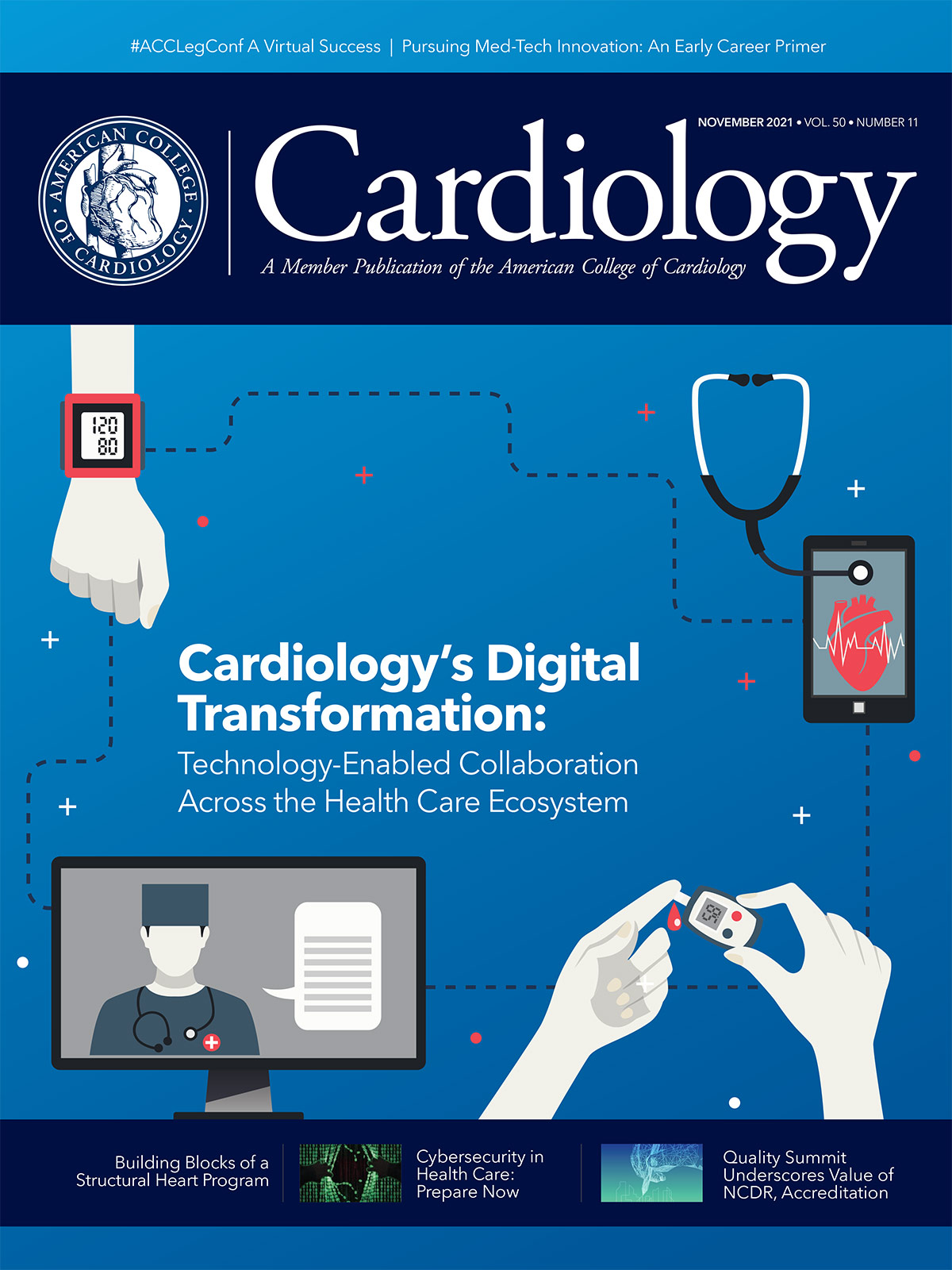Business of Medicine | Alignment 2.0: Creating the Ideal Physician/Hospital Vehicle

Healthy and long-lasting relationships between physicians and hospital systems are necessary to deliver high-quality, value-based care and make a meaningful, lasting impact on patients. Currently the predominant integration model in cardiology for these two parties has been employment.
However, today's rapidly evolving health care landscape and the constant challenge of balancing the Quadruple Aim – better outcomes, lower costs, improved patient experience and improved clinician experience – reveals a major disconnect between employed physicians and hospital systems. According to MedAxiom survey data, despite years of experience, physician-hospital alignment has been a top-of-mind concern for health leaders for several consecutive years. As we face new challenges that are shifting the way care is delivered, we must reassess current strategies and pursue an "alignment 2.0" model.
Defining Integration and Alignment
The differences between integration and alignment are critical. We must define these terms before delving into trends and what they mean for the cardiovascular industry. Merriam-Webster defines integration as "the act or process of uniting different things." In contrast, alignment is defined as "the proper positioning or state of adjustment of parts in relation to each other; an arrangement of groups or forces in relation to one another." Integration is the easy part. It can be accomplished with a transaction and changing the logo on a paycheck. Creating true alignment, where the sum of the combined forces is greater than the individual parts, is much more difficult.
Alignment Remains Top of Mind
Although health care change is moving at a rapid pace, the most pressing issues have remained somewhat stagnant for the last few years, with physician-hospital alignment models and strategies consistently ranking in the top three for MedAxiom members, comprised of 425+ cardiovascular programs.
Although the rate of integration from private practice has slowed since the initial wave more than a decade ago, MedAxiom's 2021 Cardiovascular Provider Compensation and Production Survey Report revealed the percentage of integrated groups – those employed or in a professional services agreement (PSA) – inched up again in 2020, now representing 87% of total cardiovascular programs. While there have been some high-profile, albeit isolated, divorces of cardiologists from a hospital employment model, MedAxiom's 2020 data show this is far from a trend and alignment between physicians and hospital systems will likely remain a priority for years to come.
Alignment Structure
As we explore alignment, it's important to understand the differences between physician employment and PSA models. Collaborating with a larger organization can help physicians cut down on regulatory and financial risk, and access capabilities, tools and resources they may not be able to obtain on their own. While physician autonomy has always been a concern in an employment model, benefits include schedule consistency and income security. In a PSA model, physicians maintain more independence but receive payment through work relative value units (RVUs) or other fixed compensation rates, which can be unpredictable.
Why Do We Need a New Model?
For more than a decade, the payments made to physicians by Medicare for professional services have lost ground relative to inflation. The result of this is deteriorating financial performance for cardiology practices, regardless of the ownership. Data suggest this trend will not change any time soon.
Key Considerations
- Physician practice revenue per unit will not keep up with normal inflation.
- Focusing on volume growth to address this issue is likely a losing proposition.
- Taking risk offers an opportunity to grow revenue faster than the expense curve.
- There may be safety in cardiovascular physicians and hospitals partnering given the influx of disrupters.
Based on current predictions and given the aging U.S. population, Medicare, typically the largest payer for most cardiology programs, is becoming insolvent. To correct this, the Centers for Medicare and Medicaid Services will be forced to continue downward pressures on provider reimbursement, much of this coming in the form of fee-for-service unit reductions, but also through an intentional shift to value and alternative payment models.
It is this shift to value that offers an opportunity to stanch the red ink trend. Further complicating the provider landscape, there is a sea of well-capitalized industry disrupters – some traditional insiders like insurance, but a host of outsiders – swimming in our waters. With compounding pressures facing our industry, getting alignment right is paramount. More positively, proper alignment provides both parties a significant opportunity to succeed and be rewarded around value, an opportunity that would likely be much more elusive separately.
Introducing Alignment 2.0

MedAxiom received feedback from nearly 400 cardiologists and cardiovascular administrators about their experience and satisfaction with hospital integration. Those results revealed that generally neither party is enthusiastic about the relationship, with many physicians expressing they've "lost all of their entrepreneurial spirit." Despite these sentiments, the results also revealed that very few believe there is a likely path to separation and a return to private practice for the physicians.
While no one can predict the future, what we know for certain is that cardiovascular patients need both cardiologists and hospitals, which makes for a natural partnership. Further, our survey data show that the penetration of physician/hospital integration is expanding, now comprising 87% of the market compared with a decrease in private practice ownership to 13%, suggesting these partnerships will live long into the future.
Considering all this, imagine if there was an alignment model that:
- Allows groups to remain independent or largely autonomous
- Aligns risk and reward around care teams and provides appropriate incentives for maximizing the efficiency of the professional team
- Promotes and rewards entrepreneurial thinking and innovation, pursuit and achievement of the Quadruple Aim improvements.
- Provides joint physician/hospital contracting and purchasing leverage
- Creates provider risk alignment and scale
- Has investment opportunities and flexibility
- Allows for income sharing flexibility
- Passes compliance testing.
Alignment 2.0 reimagines the traditional PSA where the cardiovascular providers live in their own legal entity, owned by the physicians. This entity then contracts with the hospital/health system – often exclusively – to provide professional services, including clinical, managerial and administrative. Remuneration for these services will be multifaceted with rewards for production (such as work RVUs), quality and outcomes, cost reductions, access efficiencies, and operational improvements. The model may also include joint ventures on facilities, such as ambulatory surgery centers, or on research, real estate or management services.
While the objective of this article is not to provide legal or valuation counsel, both of which are intrinsically and inexorably linked to physician/hospital relationships, the model described above does provide more flexibility than traditional employment. By moving physicians out of large multispecialty groups, the typical landing place of cardiology employment, and into cardiovascular focused provider practices, there is greater potential to meet group practice definitions and limit financial scrutiny down to the physician level.
All of this will tend to make the model:
- A more durable relationship
- Promote entrepreneurial thinking and corresponding risk/reward
- Allow for greater physician autonomy
- Foster the ability to share risk and reward.
Conclusion
Understanding where we are today with integration and alignment is vital for building a future where physicians, hospitals and, most importantly, patients can thrive. As we face compounding challenges – from pressures on unit pricing and inflation to an aging population and industry disrupters – the status quo won't suffice. At MedAxiom, we see firsthand what is and what isn't working for integration and alignment models at hundreds of cardiovascular programs across the country. Now is the time to create the ideal physician/hospital vehicle through an alignment 2.0 model that can truly transform cardiovascular care.

This article was authored by Joel Sauer, MBA, executive vice president of Consulting at MedAxiom.
Clinical Topics: Cardiovascular Care Team, Diabetes and Cardiometabolic Disease, Prevention, Sports and Exercise Cardiology, Exercise
Keywords: ACC Publications, Cardiology Magazine, Motivation, Fee-for-Service Plans, Feedback, Centers for Medicare and Medicaid Services, U.S., Remuneration, Personal Satisfaction, Ownership, Cardiologists, Swimming, Ambulatory Surgical Procedures, Medicare, Hospital-Physician Joint Ventures, Aging, Group Practice, Hospitals, Social Responsibility, Reward, Cardiology, Employment, Costs and Cost Analysis
< Back to Listings

